It was a warm summer night in East Texas when a Piper PA-32-300, N1403X, lined up for runway 17 at Mount Pleasant Regional. The weather looked friendly—clear skies, 10 miles of visibility, light winds—and the runway lighting system was alive with REILs, MIRLs, and a four-light PAPI burning steadily. The airplane had flown a straightforward hop from Hot Springs, Arkansas, descending from cruise, turning left base to final, and tracking inbound. About four-tenths of a mile from the threshold, the approach ended in trees. The Saratoga broke up across a short debris path; the pilot and two passengers were seriously injured, and a pilot-rated passenger in the right front seat did not survive. The NTSB later concluded the pilot failed to maintain the proper glidepath at night, resulting in a collision with terrain.
Who Was at the Controls
The 49-year-old pilot held a private pilot certificate with airplane single-engine land. He did not hold an instrument rating. His total flight time sat at 189.3 hours, with 110.8 hours as PIC, and about 60 hours in the PA-32-300. His most recent flight review had been completed about two months earlier. In the preceding 30 days, he had logged 9.3 hours at night, including three night landings during a flight three weeks before the accident. A pilot-rated passenger occupied the other front seat—two pilots aboard, but only one acting as PIC.
The Setup to Final
ADS-B data showed a pretty classic descent from cruise into the pattern. The airplane joined a left base for runway 17 and rolled onto final about 1.5 miles from the numbers. From that point until the last recorded position, the altitude trace looked smooth—no big deviations, no obvious last-second lurches or dive-and-drives. A nearby witness, positioned right along the extended centerline, heard the airplane pass overhead and, about a second later, heard the impact with trees across the road. He thought the engine sounded strong—“maximum power,” like it was “at full throttle.” That’s a detail I pay attention to because it can mean two different stories: either the airplane arrived high and hot and was adding power in the flare, or, more commonly in night black-hole type events, the pilot realized the sink late and went to power trying to arrest it. The wreckage path supported that second scenario.
The Numbers That Mattered
Data reconstructed from the approach put the indicated airspeed around 74–78 knots on short final. In this Saratoga, the published stall is 62 knots clean and 55 knots with full flaps. Descent rates ran 280–700 fpm—completely reasonable for a stable, three-degree visual approach. So this did not look like a classic slow-flight stall or a wildly unstable sink. The airplane simply got too low, too soon. On a standard three-degree path, you’d expect to be roughly 200–250 feet AGL at about 0.4 miles from the threshold. Instead, the track intersected treetops north of the airport, with the right wing clipping branches and separating outboard first. The main wreckage—fuselage, left wing, engine—came to rest inverted a few hundred feet beyond the initial strike. Investigators found no pre-impact mechanical issues with the engine or airframe.
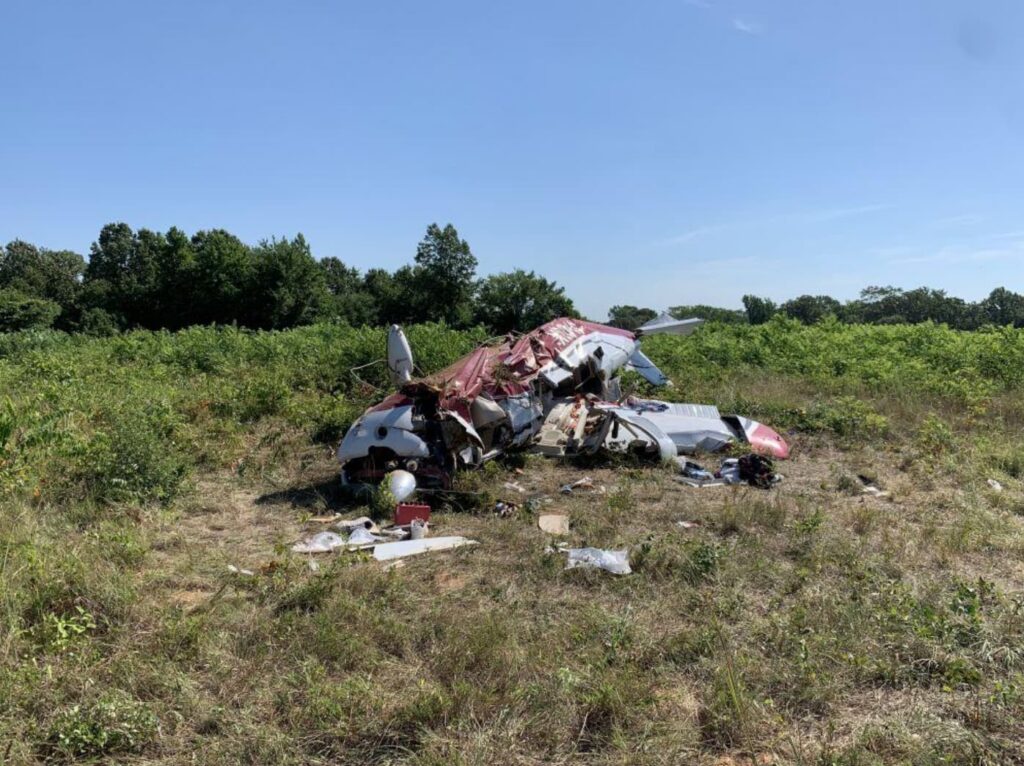
Lighting, Illusions, and the PAPI You Paid For
Runway 17 at Mount Pleasant is a good one: 6,004 feet long, 100 feet wide, REILs, and a continuously operating four-light PAPI on the left side. At night, those systems are there to keep you honest on vertical path. The PAPI was confirmed illuminated during the on-site investigation. The airport lighting can be pilot-controlled to medium or high intensity, but it was pre-set to low from sunset to sunrise unless someone clicked it up. None of that guarantees you won’t fall prey to a classic black-hole illusion—the absence of ground lights before the runway, which can make you feel higher than you are and tempt you to dip below a proper glidepath. That’s why the PAPI matters: if it showed three or four red, that was the cue to add power and climb back to the path, or go around if things weren’t correcting immediately. The NTSB’s bottom line was simple: the airplane got below the correct glidepath and hit trees.
What the Engine Sound Likely Meant
That witness description of “maximum power” right before the impact matched what I’ve seen in other night, short-final accidents. When a pilot recognizes a low path late, the natural reaction is to push the throttle forward to arrest the sink. But close to the ground, with only a few seconds to trade power for climb—and with drag configuration, inertia, and any pitch transients in the mix—the airplane may not climb enough before obstacles. The wreckage sequence here—initial tree strike by the right wing at about 50 feet up, short ground scar, and then the main wreckage inverted—fit that narrative of a last-second power addition that came too late to clear the trees. It’s a reminder that a go-around decision at night needs to be made earlier than you think. If the lights don’t look right, or the PAPI isn’t giving you two-white/two-red soon after turning final, don’t keep nursing it—push the power and go around while you still have altitude and options.
Crew Dynamics with Two Pilots Onboard
The right-seat passenger was pilot-rated. That can be a resource or a risk factor depending on clarity of roles. The report didn’t note any specific task confusion or callouts on the flight deck, but it’s worth calling out a common trap: when both people can fly, nobody may feel fully responsible for verbalizing deviations. At night, in a visual pattern, the most valuable contribution from the non-flying pilot is often a simple, assertive callout—“three red, we’re low” or “go-around.” If you’re carrying another pilot, brief that expectation out loud on downwind. Make it normal to call PAPI status, sink rates, and airspeed on final.
Training Takeaways for Night Visual Approaches
This case hit a handful of concepts I brief religiously before night landings:
- Use the vertical guidance you have. If there’s a PAPI or VASI, fly it. If you have a GPS with VNAV+glideslope guidance, set it up and monitor it as a cross-check, even in the VFR pattern.
- Set personal gates. For example: by 500 feet AGL on final, I want two-white/two-red (or better) and stable airspeed and sink. If I can’t achieve that by that altitude, I go around. At night, those gates should be more conservative.
- Don’t be shy with the lights. Click the runway lights and PAPI up to medium or high if available, especially on moonless or low-illumination nights. On this night the moon was a 19% crescent—better than new, but still not much help over dark terrain. Bright lights help your eye stay calibrated to the correct slope.
- Keep the mental model alive. At 1.5 NM on final, a 3-degree path puts you roughly 500 feet AGL. At 0.5 NM, think on the order of 150–200 feet AGL. If the picture looks lower than that, trust the math and the lights—not your night vision.
- Standardize your go-around. Practice it at night: power, pitch to climb, carb/fuel/prop as appropriate, positive rate, flaps on schedule, and call the runway environment in sight only when you’re truly set up again. Building that muscle memory in the pattern pays off when you need it late.
What Didn’t Cause This
We always look hard for mechanical contributors. Investigators examined the engine and airframe and found no anomalies consistent with a pre-impact failure. The altimeter setting checked out. Winds were gentle and not a factor. Airspeed stayed well above stall margin. The descent rate was normal for the phase of flight. All of that pushed the analysis away from “couldn’t” and toward “didn’t”—a glidepath that wasn’t captured or maintained to touchdown.
Closing Thoughts
Night VFR can lull you into thinking it’s just daytime with cooler air. It isn’t. The visual cues that let you judge slope and height are weaker, and the dark foreground off the end of a runway can pull you down if you let your eyes substitute for instruments and lights. N1403X’s final approach at Mount Pleasant read like a stable setup that simply sagged below path in the last half-mile. With two pilots in front, a working PAPI, and a long runway, the accident had multiple outs—any of which could have broken the chain: call the reds earlier, add power and arrest the sink sooner, or bail out into a go-around. The best takeaway for all of us is to make those outs explicit before the wheels get near the trees: brief the gates, fly the lights, and never be late on a night go-around.

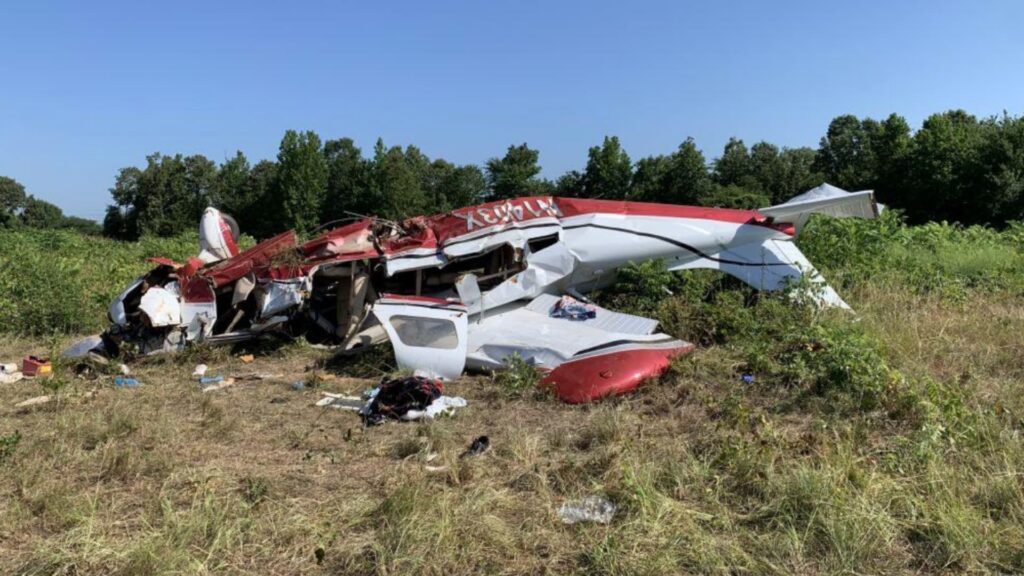



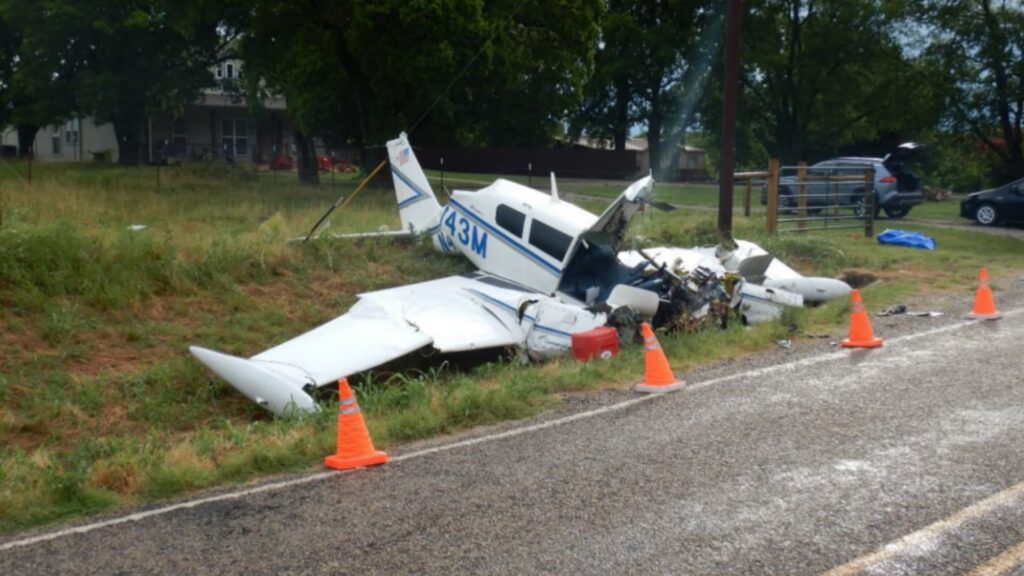
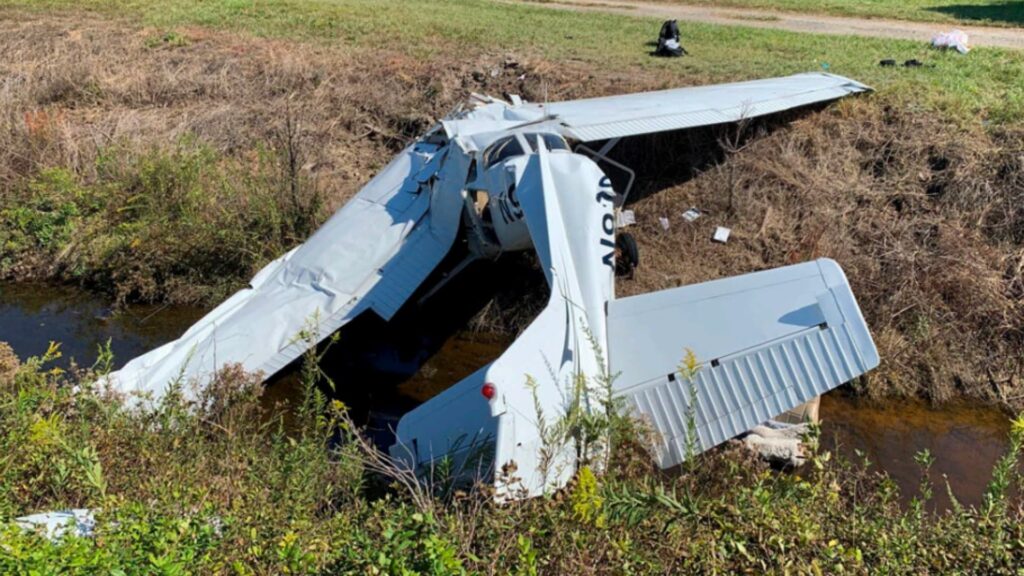
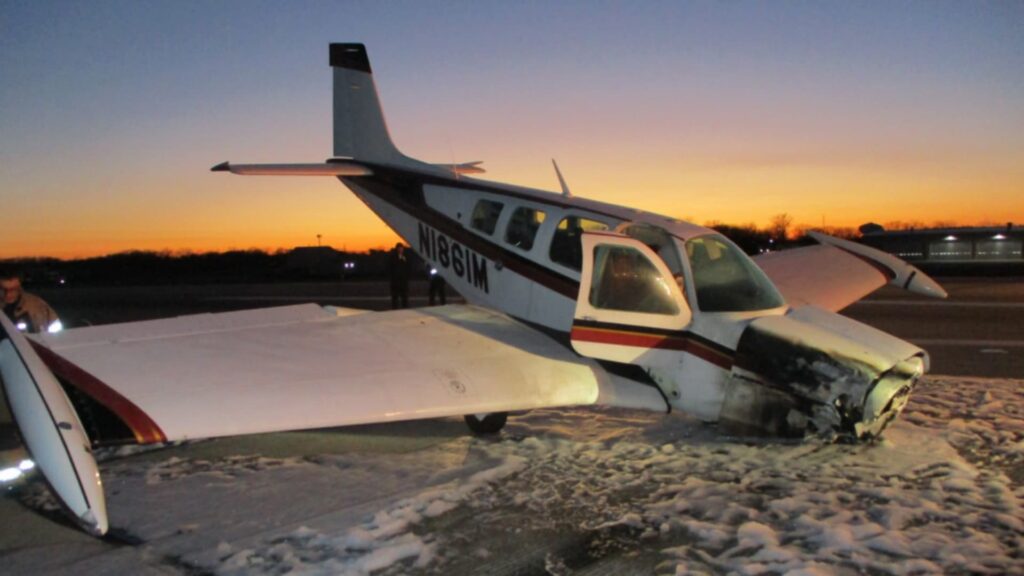



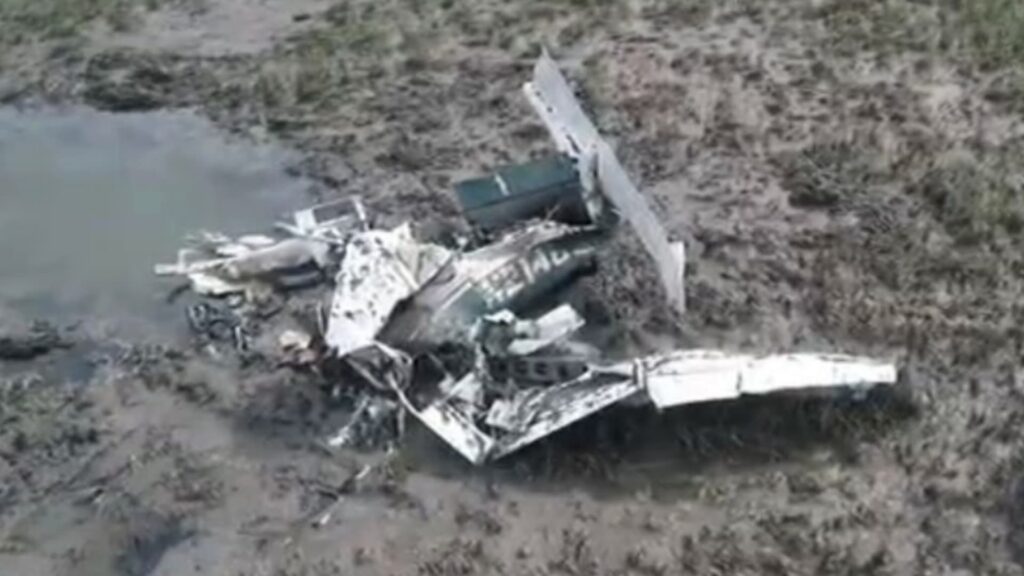
3 Comments
What a mess that plane was! I know about PAPI, though I wasn’t aware there was a “better” than 2 white 2 red, but presumably half a mil away you might prefer 3 white. I haven’t come across REILS or MIRLS – some kind of lighting I guess. What distance from the runway should the PAPI be 2-2? As soon as you see them? Just before touchdown? For a light aircraft, with such a long runway, if you were really worried about black holes, could you wait until you crossed the threshold and then descend from say, 500ft? Trees seem like the no 1 enemy for a small plane. If they’re tall, they should have a red light on top just like a building.
Force of habit using PAPI or VASI on all visuals, day or night, if available. It was my meatball, line up aid for GA.
“Red over white – alright. Red over red – you’re dead”